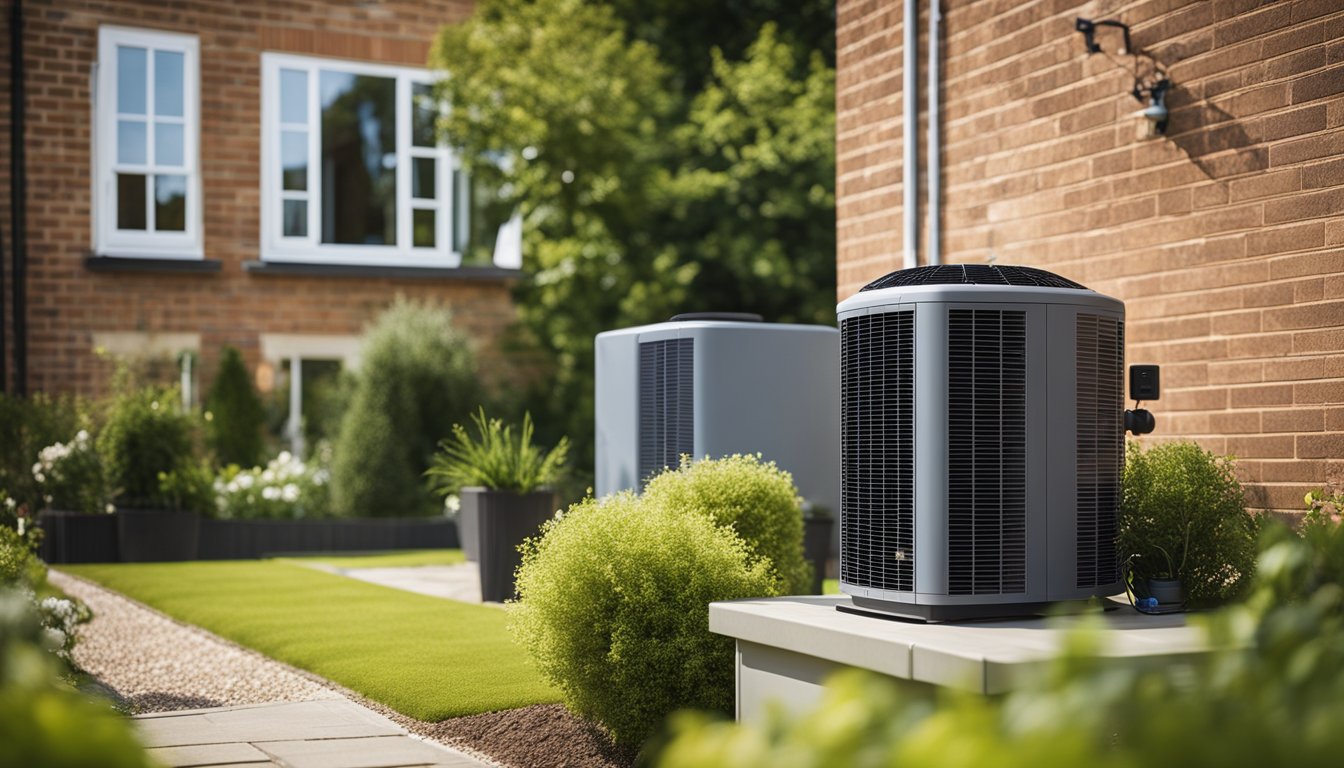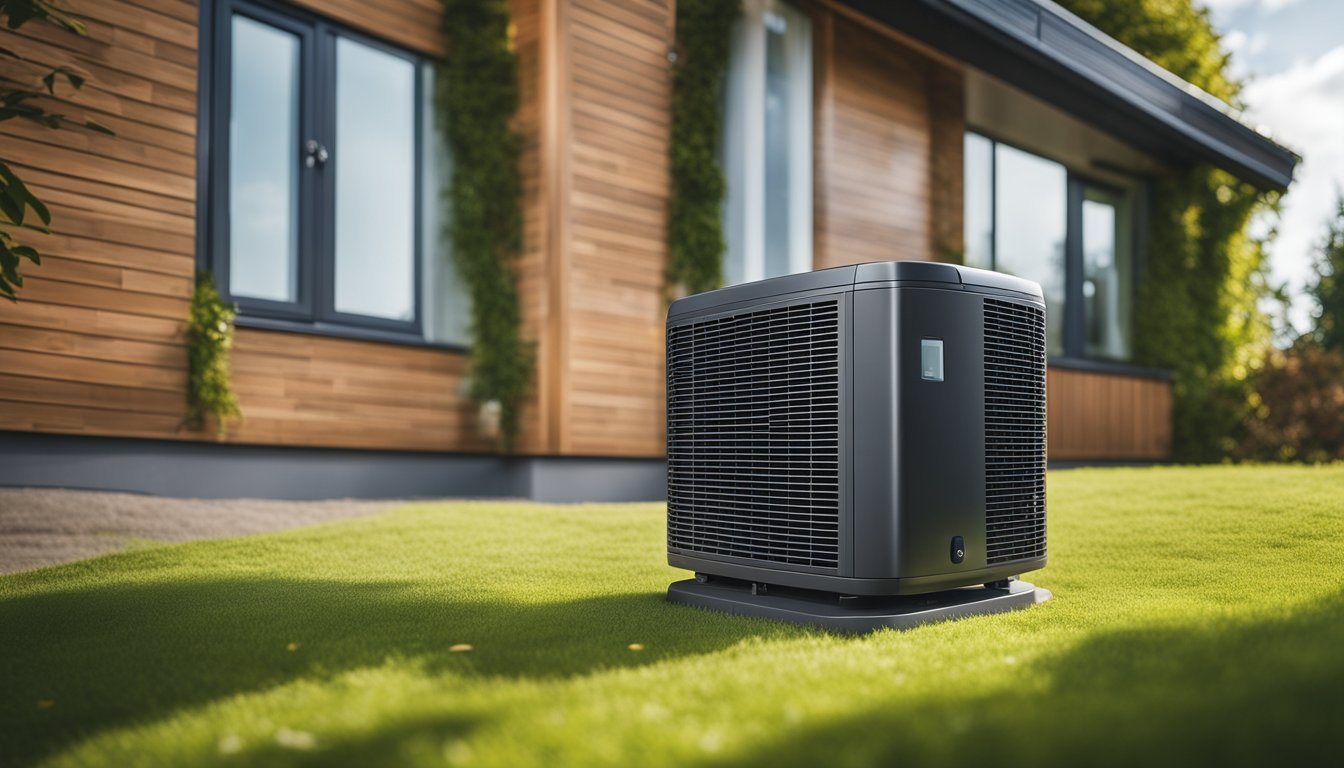Late updated: 01 Jul 2024 16:07
Written by: Eleanor Hartman
The Benefits of Air Source Heat Pumps in the UK: An Eco-Friendly Heating Solution
Air source heat pumps (ASHPs) are revolutionising the way we heat our homes in the UK. By extracting heat from the outside air and transferring it into our domestic heating systems, ASHPs provide a renewable and efficient solution for maintaining a comfortable indoor environment. This innovative technology not only reduces our reliance on fossil fuels but also helps lower energy bills and carbon emissions.

Many British households are turning to air source heat pumps as part of their effort to embrace more environmentally friendly energy solutions. These systems operate similarly to refrigerators, but in reverse, capturing and boosting ambient heat to warm our homes. Their ability to function efficiently even in colder temperatures makes them a viable option across various regions in the UK.
Moreover, air source heat pumps are a cost-effective investment. With potential grants like the Boiler Upgrade Scheme and savings on energy bills, we'll find a measurable economic advantage. The installation process can be tailored to suit different budgets and needs, whether opting for a monobloc or split system. This makes ASHPs an adaptable choice for both new builds and older properties.
Key Takeaways
- Air source heat pumps enhance home heating efficiency and cut carbon emissions.
- They provide a renewable and cost-effective heating solution.
- Options like the Boiler Upgrade Scheme make them financially accessible.
Understanding Air Source Heat Pumps
Air source heat pumps offer an eco-friendly solution to home heating. They extract heat from the outside air and transfer it indoors, providing both heating and cooling benefits.
Types of Air Source Heat Pumps
There are two main types of air source heat pumps: air-to-water and air-to-air. The air-to-water heat pumps integrate with existing water-based systems, such as radiators or underfloor heating. They are ideal for providing hot water and space heating.
Air-to-air heat pumps, on the other hand, provide heating and cooling through air distribution. They are less common in the UK due to their reliance on ductwork, which isn't typically found in British homes. Each type has its advantages and applications, depending on our home's infrastructure and heating needs.
How Air Source Heat Pumps Work
An air source heat pump functions by extracting heat from the outside air using a heat exchanger. The heat pump contains a refrigerant that absorbs this heat and evaporates. The resulting gas is compressed by a compressor, increasing its temperature.
The hot refrigerant gas then passes through another heat exchanger, heating the water or air that circulates through our home. This process uses technology to transfer heat efficiently, even in cold weather. The efficiency of this process is measured by the Coefficient of Performance (COP) and Seasonal Coefficient of Performance (SCOP), indicating how effectively the heat pump performs over a season.
Installation Process
Installing an air source heat pump involves several steps. First, we need to assess our home's current heating system and the suitability for a heat pump. Installation often requires planning permission unless it falls under permitted development.
The actual installation involves placing the outdoor unit in a location with good airflow and minimal obstructions. The unit is connected to the indoor system, whether it's radiators, underfloor heating, or air distribution setups. Installation costs can vary based on our home's size, the complexity of the existing system, and the specific type of heat pump.
Key Performance Indicators
Key performance indicators (KPIs) include the heat pump’s COP, SCOP, and other metrics of efficiency and performance. The COP measures the efficiency at a specific temperature, whereas the SCOP provides a more comprehensive view over time.
Another crucial indicator is the maximum efficiency, denoting the highest performance level under optimal conditions. Heat pump costs also factor into the KPIs, as initial and operational costs determine the long-term savings and benefits. Government incentives, like the heat pump tariff, can make the financial aspect more attractive by providing rebates or tax credits for installation and operation.
By understanding these components, we can better evaluate whether an air source heat pump is a suitable and cost-effective heating solution for our homes.
Economic and Environmental Advantages

Air Source Heat Pumps (ASHPs) present a multitude of benefits regarding both financial savings and environmental impacts. By incorporating government incentives and harnessing renewable energy, ASHPs offer a cost-effective and eco-friendly alternative to traditional heating systems.
Cost Savings and Government Incentives
The initial investment for an air source heat pump can range between £6,500 and £11,500, which includes VAT and labour costs. This is mitigated by the Boiler Upgrade Scheme that offers grants to reduce upfront costs.
Over time, ASHPs can significantly reduce energy bills due to their efficiency, producing more energy than the electricity they consume. Additionally, tariffs on electricity sourced from renewable energy can further lower running costs.
Government incentives, alongside grants and subsidies, make ASHPs an economically attractive option for homeowners seeking cost-effective heating solutions.
Environmental Impact Reduction
Switching to ASHPs contributes to a substantial reduction in carbon emissions, aligning with the UK’s net zero targets. By replacing fossil fuel-based systems, ASHPs diminish reliance on non-renewable sources and cut down greenhouse gas emissions.
The environmental benefits extend to diminished risks of carbon monoxide poisoning and lessened air pollution. The use of ASHPs promotes a transition towards a greener, more sustainable energy infrastructure, with a broad impact on climate change mitigation.
Improvements in Home Heating Efficiency
ASHPs are renowned for their superior energy efficiency. They can deliver three to four times more heat energy than the electrical energy they consume. This efficiency translates into consistent, reliable heating throughout the home, whether through underfloor heating or traditional radiators.
Furthermore, ASHPs can be integrated with smart thermostats and controls, enhancing their operational efficiency and optimising energy use. This results in further savings and reduced energy wastage, reinforcing their role as a viable, sustainable home heating solution.
Frequently Asked Questions

In this section, we will address key points on the benefits, cost-effectiveness, and functionality of air source heat pumps in the UK, ensuring you have all the details needed to make an informed decision.
What are the main advantages of installing an air source heat pump in the UK?
Air source heat pumps are energy-efficient and can significantly reduce our household heating bills. They are also low maintenance and have a lifespan of up to 20 years. Moreover, they provide both heating and cooling solutions, making them a versatile option for every home.
How cost-effective are air source heat pumps compared to traditional heating systems in the UK?
While the initial cost of installation can be higher than traditional systems like gas or oil boilers, air source heat pumps are more efficient and can lead to lower energy bills. Additionally, there may be grants and subsidies available to offset some of the initial costs, making them a cost-effective long-term investment.
Can air source heat pumps provide adequate heating during the UK winter?
Yes, air source heat pumps are designed to work efficiently even in colder temperatures typical of UK winters. Modern units can operate effectively down to -15°C, ensuring our homes remain comfortably warm throughout the season.
What are the installation costs for air source heat pumps in the UK?
Installation costs for air source heat pumps can range from £6,500 to £11,500, depending on the size of the system and specific installation requirements. These costs can be offset by government incentives like the Boiler Upgrade Scheme, which can help reduce the overall expenditure.
What environmental impact do air source heat pumps have in the UK?
Air source heat pumps significantly reduce carbon emissions compared to traditional heating systems. They use renewable energy from the air, making them an environmentally friendly option. By lowering our reliance on fossil fuels, we contribute to a reduction in greenhouse gas emissions and promote sustainability.
How do air source heat pumps function in the UK climate?
Air source heat pumps extract heat from external air and convert it into usable heat for our homes. They perform well in the UK's variable climate, thanks to their advanced technology. Even in colder months, they can effectively draw sufficient heat to maintain a comfortable indoor environment.